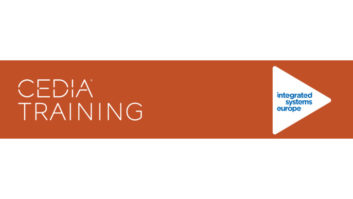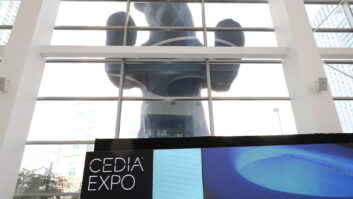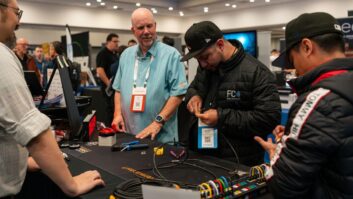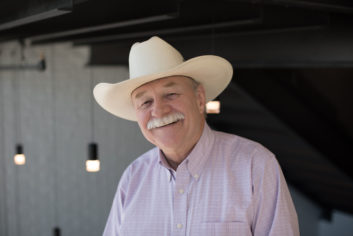
When it comes to surveillance and security — as with any other custom integration — the discovery process is key. Michael Cogbill, CEDIA Board Member and VP of engineering for ETC Simplify (Palm Beach, FL, etcsimplify.com), is well-versed in these systems, from cameras to lenses to recorders and storage devices, and he joined CEDIA’s Ed Wenck and Walt Zerbe on a recent CEDIA podcast for a deep dive into all of these systems.
Cogbill stresses the critical nature of those initial discussions: “It’s interesting because we get these clients, and they come in and they start asking, ‘Well, what kind of cameras are you going to put in?’”
Cogbill’s response is consistent. “Whoa, wait a minute. If you had cameras, what would you do with them?
“Here’s this starting point: What do you want to see? What is it that you think you want to see when you’re looking at your camera? Where do you want to put the emphasis? Are you wanting 100 percent coverage so you can see every inch of your property? Or do you want just to see the kids in the pool, and maybe see who’s coming up the driveway? Those are a lot different than if you’re doing a fairly high-security application.”
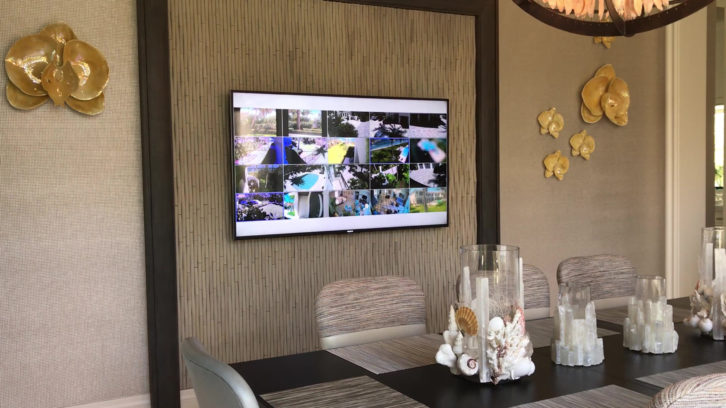
Better Than the Human Eye
Cogbill has a ton of examples to draw from — even marine applications.
“One of our clients had a really large yacht. It was berthed over in Perth, and he was taking it west across some very bad territory that had known pirates roaming those waters. In addition to having security, he wanted to have some visibility — particularly at night,” Cogbill remembers.
The client had already determined he’d need cameras with infrared capabilities. Cogbill had a better solution: “I told this gentleman, ‘You have to understand that you’re out in the middle of the dark ocean, you’re not going to see that well. You’re only going to see a limited distance.’”
Other factors — fog, for example — made the infrared solutions less than ideal. “I convinced him to install what are called thermal cameras.” The client was impressed by the resolution they afforded — even at distances that could alert the crew to approaching danger in plenty of time. “We had these cameras that could see 1500 to 2000 feet out in total darkness,” notes Cogbill.
Pixels Per Foot, or PPF
For more common, land-based applications with traditional cameras, one of the many factors to consider is pixels-per-foot: That number has a pretty profound effect on resolution.
Cogbill explains: “If I take a picture of you from ten feet away with a 1080p camera, I’m going to get a pretty good image. If you move away from that camera — say 100 feet — fewer pixels are dedicated to your face. It’s going to be harder to figure out who’s in the shot.” That issue becomes compounded when the camera’s field of view is widened.
Cogbill notes that he has a baseline for PPF. “I try to design at a 50 pixels per foot at my worst-case distance,” he explains. “At 25 pixels per foot, I’m probably not going to be able to see who it is. At 50 PPF, you can recognize someone. Say your client has a really deep backyard and a 2-megapixel camera, and you open it up with 100-degree field of view, you’re going to miss some stuff.”
There’s much more info in the full podcast, but the bottom line here is that firms like Cogbill’s are seeing growth in the segment. Consumer awareness as a result of devices like DIY video doorbells are leading to interest in better products, says Cogbill. “I’m using more professional-grade products that integrate well with our control systems.
“The whole integration game has changed with how we do this.”
For more, you can find the CEDIA on iTunes, Spotify, and all the other podcast destinations — The CEDIA Podcast, 1947: The Surveillance Show — find it on the CEDIA Blog.
This article originally ran on residentialsystems.com.




